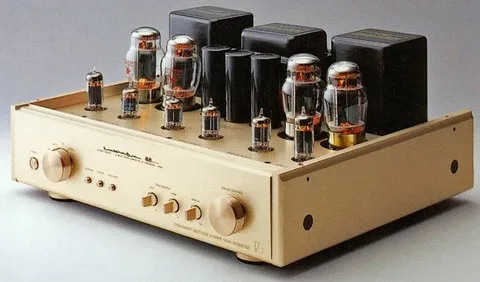What Are the Different Kinds of Amplifiers?

Amplifiers are electronic devices that boost the power of an audio or electrical signal. They are commonly found in audio systems, televisions, and other electronic devices that require amplified signals to function properly. This blog will go over the various types of amplifiers and their features.
Amplifiers in the Class A range
Class A amplifiers are the most fundamental and basic type of Amplifiers. They work by using a single transistor that is biassed to ensure that it always conducts current. Although this type of amplifier produces high-quality sound, it is inefficient in terms of power consumption. Class A amplifiers are commonly found in low-power applications like headphone amplifiers and small audio systems.
Amplifiers in the Class B range
Class B amplifiers employ two transistors that conduct current on opposite halves of the signal waveform. This type is more efficient than class A amplifiers, but the crossover between the two halves of the waveform can cause distortion in the output signal. Class B amplifiers are commonly used in car audio systems and other applications that require high power efficiency.
Amplifiers in the Class AB range
Class AB amplifiers combine the characteristics of class A and class B amplifiers to achieve a balance of power efficiency and sound quality. They use two transistors that are biassed to conduct slightly more current than class B amplifiers but slightly less current than class A amplifiers. This reduces distortion and increases power efficiency. Class AB amplifiers are common in high-end audio systems and professional music gear.
Amplifiers in the Class D range
Class D amplifiers are a type of digital amplifier that amplifies the input signal using pulse-width modulation (PWM). They work by rapidly switching the output transistors on and off in order to generate a digital signal, which is then filtered to produce an analogue output signal. Class D amplifiers are extremely efficient, with up to 90% efficiency, and are commonly used in subwoofers, car audio systems, and portable speakers
Amplifiers with tubes
Tube amplifiers, also known as valve amplifiers, amplify the input signal using vacuum tubes. They were popular in the early days of audio systems and are still popular among audiophiles due to their warm and natural sound. Tube amplifiers are well-known for producing high-quality sound, but they are also large, heavy, and require routine maintenance.

Amplifiers Made of Solid-State Materials
To amplify the input signal, solid-state amplifiers employ transistors or diodes. Because of their high power efficiency, compact size, and low cost, they are the most common type of amplifier used in modern audio systems. Solid-state amplifiers are also extremely dependable and require little maintenance.
Amplifiers with Hybrid Technology
Hybrid amplifiers combine the benefits of the tube and solid-state amplifiers to provide a good balance of sound quality and power efficiency. They use solid-state circuitry for the preamp and power amp stages, while vacuum tubes are used in the output stage to provide the warm and natural sound associated with tube amplifiers. High-end audio systems and music equipment frequently use hybrid amplifiers.
Conclusion
Finally, there are various types of amplifiers, each with its own set of features and benefits. Class A, B, and AB amplifiers are analogue amplifiers found in many audio systems, whereas class D amplifiers are digital amplifiers found in subwoofers and portable Speakers. The most common types of amplifiers used in modern audio systems are tube and solid-state amplifiers, while hybrid amplifiers combine the best features of both tube and solid-state amplifiers to provide a balance of sound quality and power efficiency. The type of amplifier to use is determined by the application’s specific requirements, such as
Finally, amplifiers are essential components of modern electronic devices and audio systems. They are intended to boost the power of an electrical or audio signal, and there are several types to choose from, each with its own set of features and benefits.
Class A, B, and AB amplifiers are analogue amplifiers found in many audio systems, whereas class D amplifiers are digital amplifiers found in subwoofers and portable speakers. The most common types of amplifiers used in modern audio systems are tube and solid-state amplifiers, while hybrid amplifiers combine the best features of both tube and solid-state amplifiers to provide a balance of sound quality and power efficiency.
When selecting the right type of amplifier for a specific application, it is critical to consider the system’s requirements, such as power efficiency, sound quality, and cost. A class A amplifier may be the best choice for low-power applications such as headphone amplifiers. Because of its high efficiency, a class D amplifier may be the best choice for high-power applications such as subwoofers. A tube or hybrid amplifier may be the best choice for high-end audio systems due to its warm and natural sound.
It is also necessary to consider the amplifier’s size, weight, and maintenance requirements. Tube amplifiers, for example, are known for producing high-quality sound but are also large, heavy, and require routine maintenance. Solid-state amplifiers, on the other hand, are extremely dependable and require very little maintenance.
In conclusion, amplifiers are critical components of modern electronic devices and audio systems. Choosing the right type of amplifier necessitates careful consideration of the system’s specific requirements, such as power efficiency, sound quality, and cost. It is possible to achieve high-quality sound output with the right amplifier, which improves the overall audio experience.